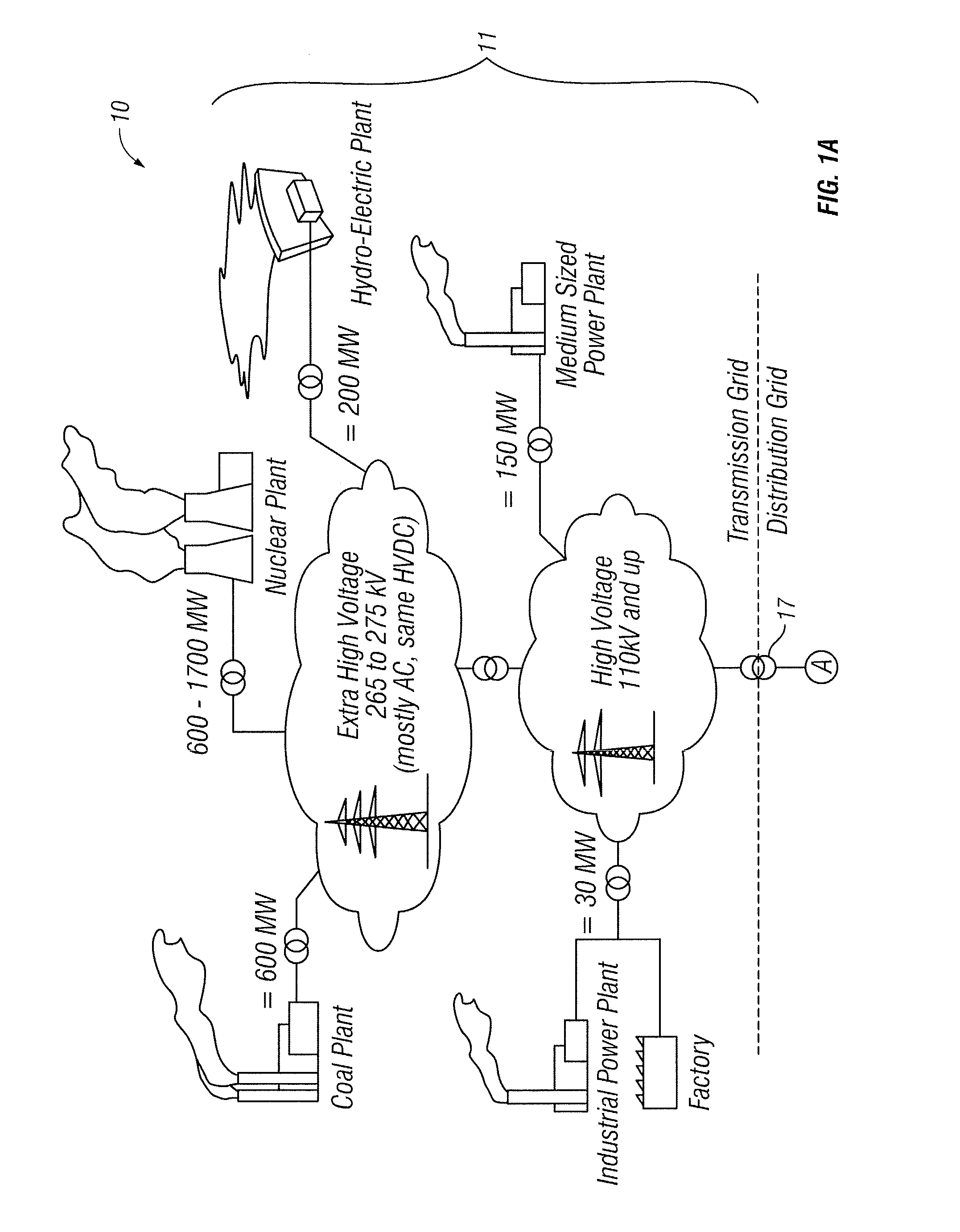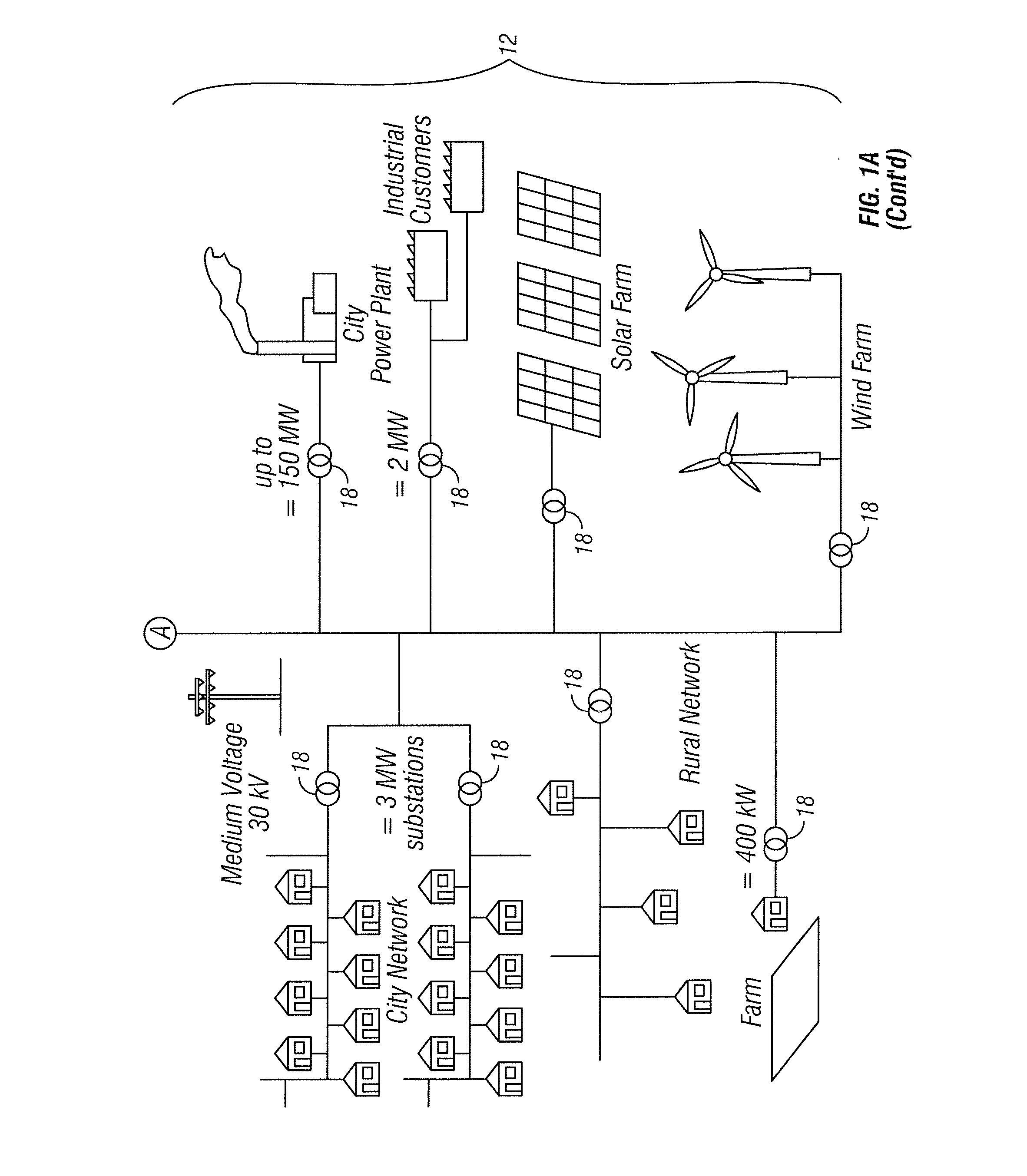Surge suppression system for medium and high voltage
a technology of high voltage and surge suppression, applied in emergency protective arrangements for limiting excess voltage/current, electrical equipment, ac network voltage adjustment, etc., can solve problems such as loss (or corruption of data) of equipment, power outages throughout the plant, and poor grounding
- Summary
- Abstract
- Description
- Claims
- Application Information
AI Technical Summary
Benefits of technology
Problems solved by technology
Method used
Image
Examples
Embodiment Construction
[0036]Referring to FIGS. 1A-1C, a generalized power distribution system 10 is shown which discloses various power system components at the grid level which supply power to individual consumers at the facility level. For purposes of this disclosure, the facility level includes industrial and factory facilities and the like, as well as residential facilities such as homes and apartment buildings. These structures include various types of power consuming devices or power consumers such as various types of equipment, motors and appliances. Stand-alone power consuming devices are also supplied by the power grid, such as street lighting traffic signals, and other power consumers.
[0037]More particularly, the power distribution system 10 includes a transmission grid 11 at high voltage levels and extra high voltage levels, and a distribution grid 12 at medium voltage levels, which in turn supplies lower power at the facility level to residences, factories and the like. FIG. 1B shows various ...
PUM
 Login to View More
Login to View More Abstract
Description
Claims
Application Information
 Login to View More
Login to View More - R&D
- Intellectual Property
- Life Sciences
- Materials
- Tech Scout
- Unparalleled Data Quality
- Higher Quality Content
- 60% Fewer Hallucinations
Browse by: Latest US Patents, China's latest patents, Technical Efficacy Thesaurus, Application Domain, Technology Topic, Popular Technical Reports.
© 2025 PatSnap. All rights reserved.Legal|Privacy policy|Modern Slavery Act Transparency Statement|Sitemap|About US| Contact US: help@patsnap.com



